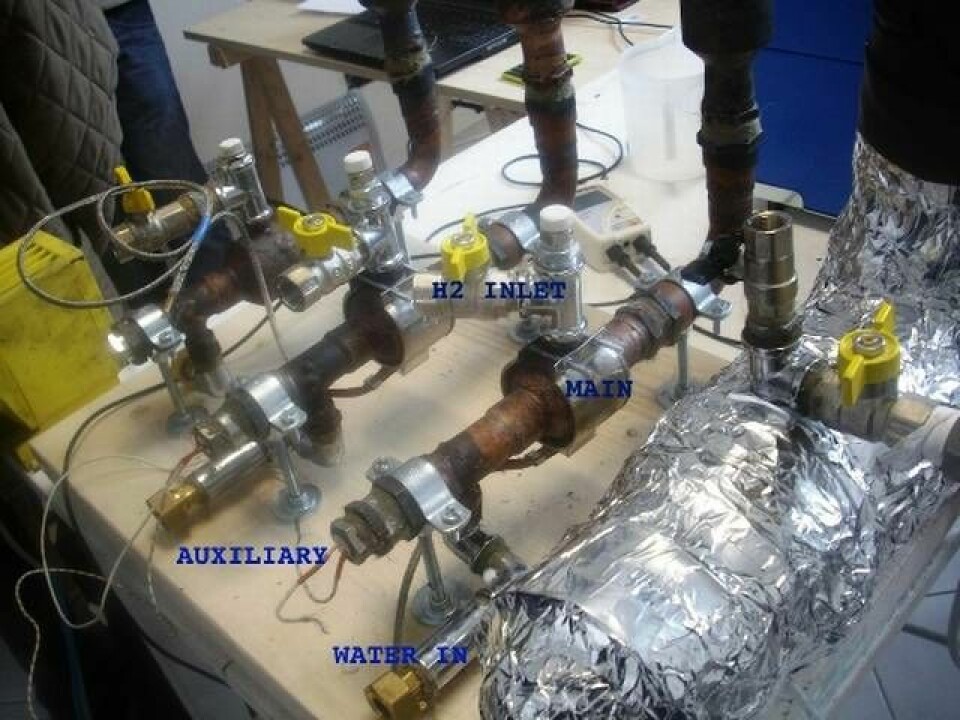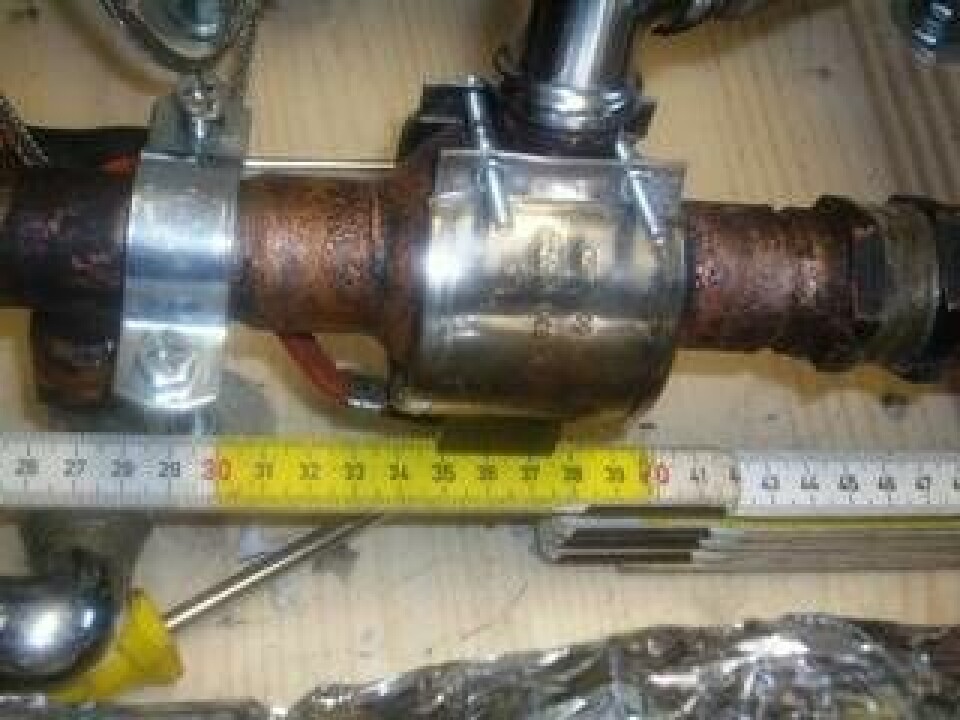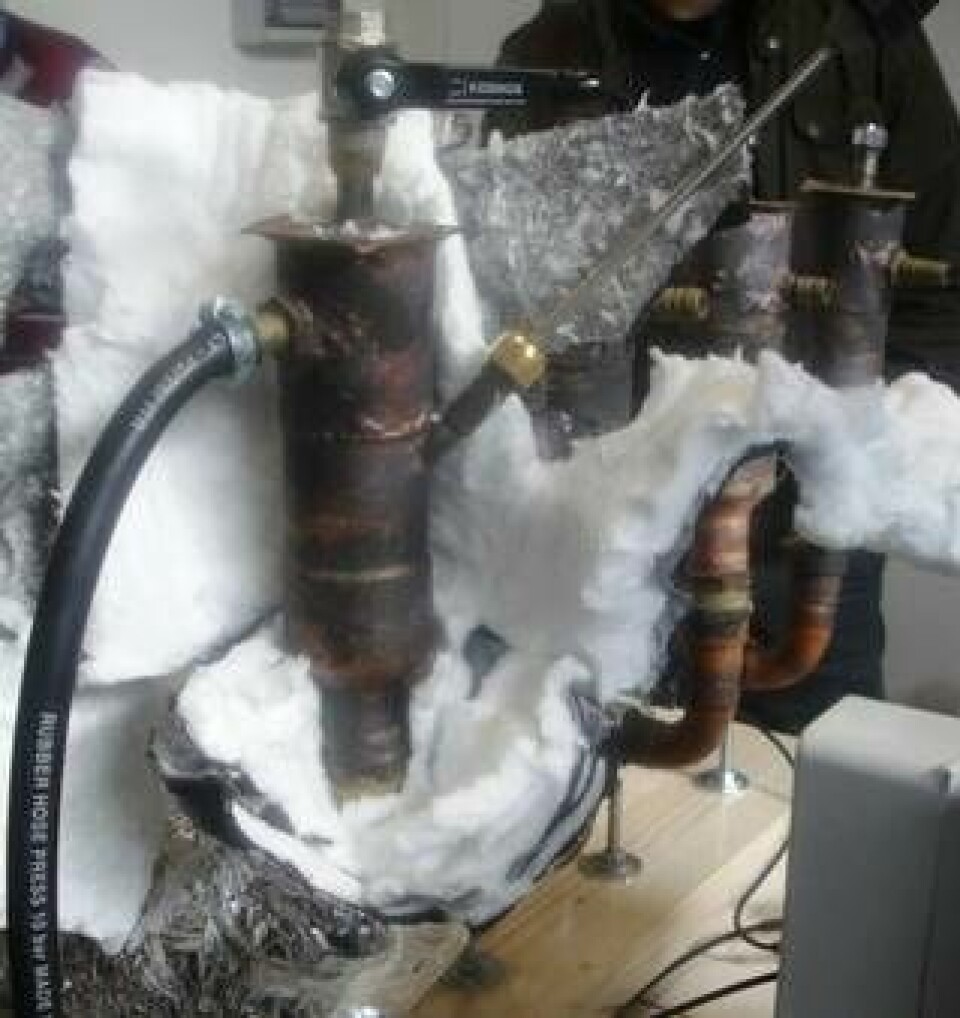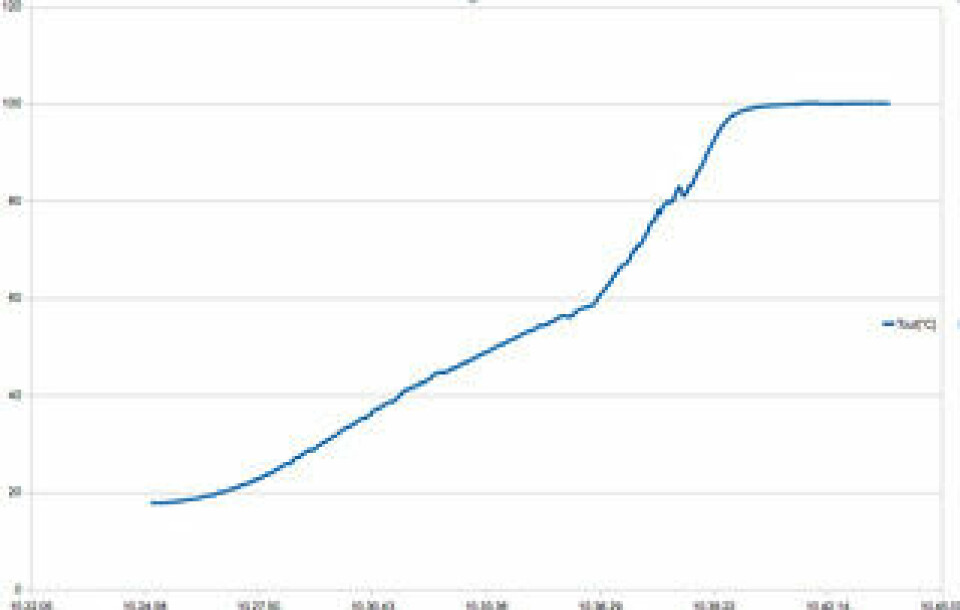(Swedish version here, Italian translation here).
“In some way a new kind of physics is taking place. It’s enigmatic, but probably no new laws of nature are involved. We believe it is possible to explain the process with known laws of nature,” said Hanno Essén, associate professor of theoretical physics and a lecturer at the Swedish Royal Institute of Technology and
chairman
member of the board (chairman until April 2) of the Swedish Skeptics Society.
Essén and Professor Emeritus at Uppsala University Sven Kullander, also chairman of the Royal Swedish Academy of Sciences’ Energy Committee, both participated on 29 March as observers at a new trial in Bologna of the so-called ‘energy catalyzer’, which could be based on cold fusion, or LENR, Low Energy Nuclear Reaction.
Participants included the inventor of the device, Andrea Rossi, his scientific advisor Professor Sergio Focardi, and physicists Dr. David Bianchini and Dr. Giuseppe Levi from Bologna University who both supervised the first public demonstration of the E-cat on 14 January 2011 in Bologna, Italy.
The new trial was conducted in much the same way as the trial in January, and lasted for nearly six hours. According to observations by Kullander and Essén, a total energy of about 25 kWh was generated.
In a detailed report (download here), they write:
“Any chemical process should be ruled out for producing 25 kWh from whatever is in a 50 cubic centimeter container. The only alternative explanation is that there is some kind of a nuclear process that gives rise to the measured energy production.”
The power output was estimated to about 4.4 kW. It’s barely half the power compared with the two previous documented experiments in January and February 2011, because the trial was made with a new and smaller version of the energy catalyzer.
The new trial was the first officially documented with the smaller version which, according to Rossi, is more stable.
“With the smaller version we avoid the power peaks that occurred at ignition and switching off,” Andrea Rossi told Ny Teknik.
He also stated that the smaller version will be used for the planned installation of about one megawatt for the pilot customer Defkalion Green Technologies in Greece.
According to Rossi, a total of 300 reactors connected in series and parallel, will be used in the installation. Originally 100 reactors of the version that delivered 10 kW of power during earlier trials, were supposedly planned for the one-megawatt installation. Rossi still expects the inauguration to take place in October 2011.
At the trial in Bologna, Kullander and Essén could investigate the energy catalyzer with the surrounding insulation and the lead shielding stripped away. The exterior design is described in their report.
The reactor itself, which is loaded with the nickel powder and secret catalysts pressurized with hydrogen, has an estimated volume of 50 cubic centimeters (3.2 cubic inches). The reactor is made of stainless steel.
A copper tube surrounds the steel reactor. The water to be heated flows between the steel and the copper. In operation, the construction is also surrounded by insulation and a lead shielding with a thickness of approximately two centimeters (0.8 inches).
Before starting, Kullander and Essén calibrated the water flow and estimated it at 6.5 kg per hour. The power required to heat the flowing water from 18 degrees and convert it completely into steam was calculated to 4.7 kW.
They also filled the reactor with hydrogen at a pressure of about 25 bars. The reactor was according to Rossi loaded with 50 grams of nickel powder.
As in previous trials the process was ‘ignited’ with an electrical resistance. Input power was 330 watts, of which about 30 watts were required to operate the electronics.
A phenomenon that Kullander and Essén noted was that the curve for the water temperature at the output showed a steady increase up to about 60 degrees centigrade, after which the increase escalated.
“The curve then became steeper, it clearly had a new derivative. At the same time there was no increase in power consumption, it rather decreased when it got warmer,” said Essén.
In their report they note that it took nine minutes to go from 20 to 60 degrees centigrade, which corresponds to the heating from the input electrical power. Going from 60 to 97.5 degrees centigrade, by contrast, just took four minutes.
Throughout the experiment Kullander and Essén had the opportunity to examine the equipment.
“We checked everything that could be checked, and we could walk around freely and have a look at most of the equipment,” said Essén.
“We looked specifically into the big control unit (with electronics) and it contains mostly rectifiers and passive components – there was nothing of interest in it,” said Kullander, which is in line of what Dr. Levi previously noted.
Kullander and Essén had their first contact with Rossi in mid February, at the time of a discussion of the physics in the energy catalyzer, organized by Ny Teknik. After getting answers from Rossi to several questions, they expressed a cautiously optimistic opinion about the technology.
At a first meeting with Rossi at the end of February they were given access to a sample of the pure nickel powder, intended for use in the energy catalyzer, and another sample of nickel powder which, according to Rossi, had been used in the reactor for 2.5 months.
Their analyses showed that the pure powder consists of essentially pure nickel, while the used powder contains several other substances, mainly 10 percent copper and 11 percent iron.
“Provided that copper is not one of the additives used as catalyst, the copper isotopes 63 and 65 can only have been formed during the process. Their presence is therefore a proof that nuclear reactions took place in the process,” Kullander said (see further details below).
The meeting in February in turn led to their involvement in the new trial in Bologna.
“My belief that there is an energy development far beyond what one would expect has been strengthened significantly as I have had the opportunity to see the process for myself and perform measurements,” said Kullander.
“Everything that we’ve found so far fits together. There is nothing that seems to be strange. All people seem to be honest and competent,” Essén added.
In line of what they expressed during the discussion in February, they believe that the physics of the energy catalyzer may possibly be explained by a combination of atomic, molecular, nuclear and plasma physics. At the same time they are skeptical of detailed and hypothetical theories suggested at this stage, and stressed instead the need for more data.
They describe that Focardi and Levi have the same approach, and support their viewpoint.
Focardi, who has been working with Rossi during the development of the energy catalyzer, is Emeritus Professor at the University of Bologna, while Levi will now be responsible for researching the energy catalyzer at the Physics Department of Bologna University, commissioned by Rossi, who pays 500,000 Euro according to an agreement between his company Leonardo Corporation and the university.
Kullander and Essén are not involved in this project.
During their visit to Bologna they met with the Rector of the Bologna University, Professor Ivano Dionigi, and had a discussion with him, Rossi, Focardi, Levi and Bianchini on the project. According to Kullander and Levi, future collaborative research is possible.
- - - -
The used powder contains
ten percent copper
Analyses of the nickel powder used in Rossi’s energy catalyzer show that a large amount of copper is formed. Sven Kullander considers this to be evidence of a nuclear reaction.
For copper to be formed out of nickel, the nucleus of nickel has to capture a proton. The fact that this possibly occurs in Rossi’s reactor is why the concept of cold fusion has been mentioned – it would consist of fusion between nuclei of nickel and hydrogen.
A term that many consider to be more accurate, however, is LENR, Low Energy Nuclear Reaction.
Ny Teknik: For how long has the powder supposedly been used in the process?
Kullander: The powder has reportedly been used for 2.5 months continuously with an output of 10 kW (according to Rossi). It corresponds to a total energy of 18 MWh, with a consumption of up to 100 grams of nickel and two grams of hydrogen. If the production had been done with oil, two tons of oil would have been required.
Ny Teknik: What analyses have you done on the powders?
Kullander: Element analysis and isotopic analysis. At the Ångström Laboratory in Uppsala, Sweden, element analysis has been made using X-ray Fluorescence (XRFS). Dr. Erik Lindahl undertook the investigation. At the Biomedical Center in Uppsala, both element analysis and isotope analysis has been done through Inductively Coupled Plasma Mass Spectrometry (ICP-MS). Associate Professor Jean Pettersson has made the measurement.
Ny Teknik: What results have you obtained from the analyses?
Kullander: Both measurements show that the pure nickel powder contains mainly nickel, and the used powder is different in that several elements are present, mainly 10 percent copper and 11 percent iron. The isotopic analysis through ICP-MS doesn’t show any deviation from the natural isotopic composition of nickel and copper.
Ny Teknik: How do you interpret the results?
Kullander: Provided that copper is not one of the additives used as catalyst, the copper isotopes 63 and 65 can only have been formed during the process. Their presence is therefore a proof that nuclear reactions took place in the process. However, it’s remarkable that nickel-58 and hydrogen can form copper-63 (70%) and copper-65 (30%). This means that in the process, the original nickel-58 should have grown by five and seven atomic mass-units, respectively, during the nuclear transmutation. However, there are two stable isotopes of nickel with low concentration, nickel-62 and nickel-64, which could conceivably contribute to copper production. According to Rossi copper is not among the additives. 100 grams of nickel had been used during 2.5 months of continuous heating with 10 kW output power. A straightforward calculation shows that a large proportion of the nickel must have been consumed if it was ‘burned’ in a nuclear process. It’s then somewhat strange that the isotopic composition doesn’t differ from the natural.
Ny Teknik: What further analyses are you planning?
Kullander: We have not planned anything definite. If it’s possible to refine the isotopic measurements, further isotopic measurements would be important mainly to get a better accuracy in the field of 60 to 65 atomic mass units. We have also discussed with Rossi installing an energy catalyzer at a laboratory in Uppsala to perform more detailed measurements. These could be part of a scientific collaboration with the Bologna University.
- - - -
READ MORE: Our complete coverage on Rossi's E-cat can be found here.




























































